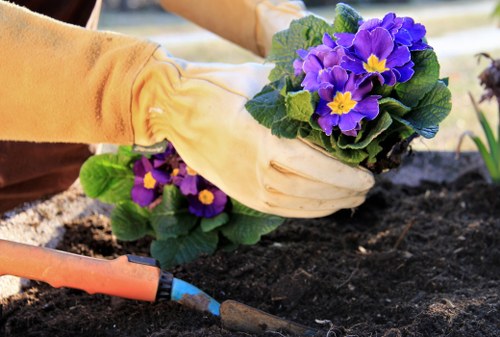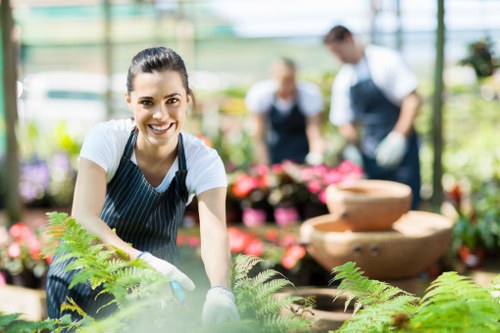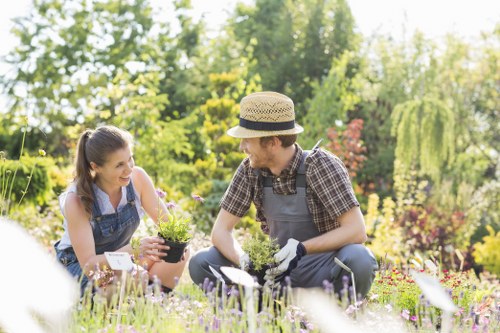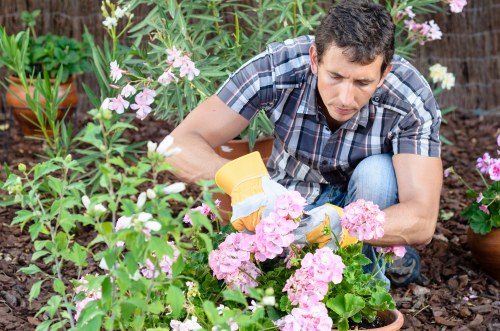Gardeners Queensbury: Your Ultimate Guide to Thriving Gardens

Welcome to the vibrant world of gardeners in Queensbury. Whether you're a seasoned green thumb or just starting your gardening journey, Queensbury offers a plethora of opportunities to create and maintain stunning gardens. This guide explores everything you need to know to cultivate a thriving garden in Queensbury.
Queensbury's unique climate and rich soil make it an ideal location for diverse plant species. From colorful blooms to lush vegetables, gardeners here can enjoy a wide variety of plants that flourish throughout the seasons.
Understanding the local environment is crucial for successful gardening. Queensbury experiences distinct seasons, each bringing its own set of challenges and rewards for gardeners. Proper planning and selection of appropriate plants can lead to a bountiful and beautiful garden year-round.

Choosing the Right Plants for Queensbury Gardens
Selecting the right plants is the foundation of any successful garden. In Queensbury, it's essential to choose plants that are well-suited to the local climate and soil conditions.
Perennials are a popular choice among Queensbury gardeners due to their ability to return year after year with minimal maintenance. Additionally, incorporating native plants can enhance the garden's sustainability and support local wildlife.
Popular choices include roses, lavender, and hostas, which thrive in the temperate climate of Queensbury. For vegetable gardens, tomatoes, peppers, and lettuce are excellent options that produce abundantly in the spring and summer months.

Soil Preparation and Maintenance
Healthy soil is the cornerstone of a thriving garden. In Queensbury, gardeners should focus on soil preparation techniques that enhance fertility and drainage.
Start by testing your soil's pH level to determine its acidity or alkalinity. Most garden plants prefer a slightly acidic to neutral pH. Adding organic matter such as compost or manure can improve soil structure and provide essential nutrients.
Regular maintenance practices like mulching, weeding, and proper watering are essential to keep the soil healthy and fertile. Mulching helps retain moisture, regulate soil temperature, and suppress weeds, reducing the need for chemical interventions.

Top Gardening Tips for Queensbury Residents
- Plan Your Garden Layout: Organize your garden space efficiently by grouping plants with similar needs together.
- Water Wisely: Implement a consistent watering schedule, preferably in the early morning or late evening to minimize evaporation.
- Prune Regularly: Remove dead or diseased branches to encourage healthy growth and improve plant aesthetics.
- Use Quality Tools: Invest in reliable gardening tools to make maintenance tasks easier and more effective.
- Stay Informed: Keep up with local gardening trends and pest control methods specific to Queensbury.

Gardening Resources and Community in Queensbury
Queensbury boasts a strong community of gardeners who share tips, resources, and support. Engaging with local gardening clubs and attending workshops can enhance your gardening skills and knowledge.
Libraries and community centers often host events and provide access to gardening literature tailored to the Queensbury area. Additionally, local nurseries and garden centers are excellent sources for region-specific plants and expert advice.
Participating in community gardens is another great way to connect with fellow gardeners, exchange ideas, and contribute to shared green spaces that benefit the entire neighborhood.
Nearby Areas for Gardeners in Queensbury
- Glen Falls: Just 5 miles away, Glen Falls offers beautiful riverbanks perfect for water-loving plants.
- Cohoes: Located 8 miles from Queensbury, Cohoes has fertile soil ideal for vegetable gardening.
- Schenectady: At 10 miles distance, Schenectady provides numerous gardening workshops and events.
- Amsterdam: 12 miles away, Amsterdam's community gardens offer ample space for experimental planting.
- Guilderland: Situated 7 miles from Queensbury, Guilderland is known for its extensive nurseries and plant shops.
- Ballston Spa: 15 miles distant, Ballston Spa features historic gardens and botanical parks.
- Baldwinsville: 9 miles from Queensbury, Baldwinsville offers rich agricultural land for hobby farmers.
- Fort Edward: Located 14 miles away, Fort Edward's climate supports a variety of hardy plants.
- Latham: 6 miles from Queensbury, Latham has active gardening clubs and seasonal fairs.
- Clifton Park: 11 miles away, Clifton Park provides spacious backyards suitable for expansive garden layouts.
Conclusion
Gardening in Queensbury is a rewarding endeavor that combines the beauty of nature with the satisfaction of cultivating your own space. By selecting the right plants, maintaining healthy soil, and engaging with the local gardening community, you can create a flourishing garden that brings joy and tranquility year after year.
Frequently Asked Questions
1. What are the best plants for beginners in Queensbury?
Beginner gardeners in Queensbury should consider hardy and low-maintenance plants such as marigolds, sunflowers, and zinnias. These plants are easy to grow and can thrive in the local climate with minimal care.
2. How often should I water my garden in Queensbury?
The watering frequency depends on the season and specific plant needs. Generally, gardens should be watered deeply about twice a week during the growing season, ensuring the soil remains moist but not waterlogged.
3. When is the best time to start planting in Queensbury?
The best time to start planting in Queensbury is in the early spring after the last frost. This allows plants to establish themselves before the warmer summer months.
4. How can I attract pollinators to my Queensbury garden?
To attract pollinators, include a variety of flowering plants that bloom at different times. Providing a water source and avoiding pesticides can also create a welcoming environment for bees, butterflies, and other beneficial insects.
5. What are common gardening challenges in Queensbury?
Common challenges include managing pests, coping with variable weather conditions, and maintaining soil fertility. Regular monitoring and adopting sustainable gardening practices can help overcome these issues effectively.


